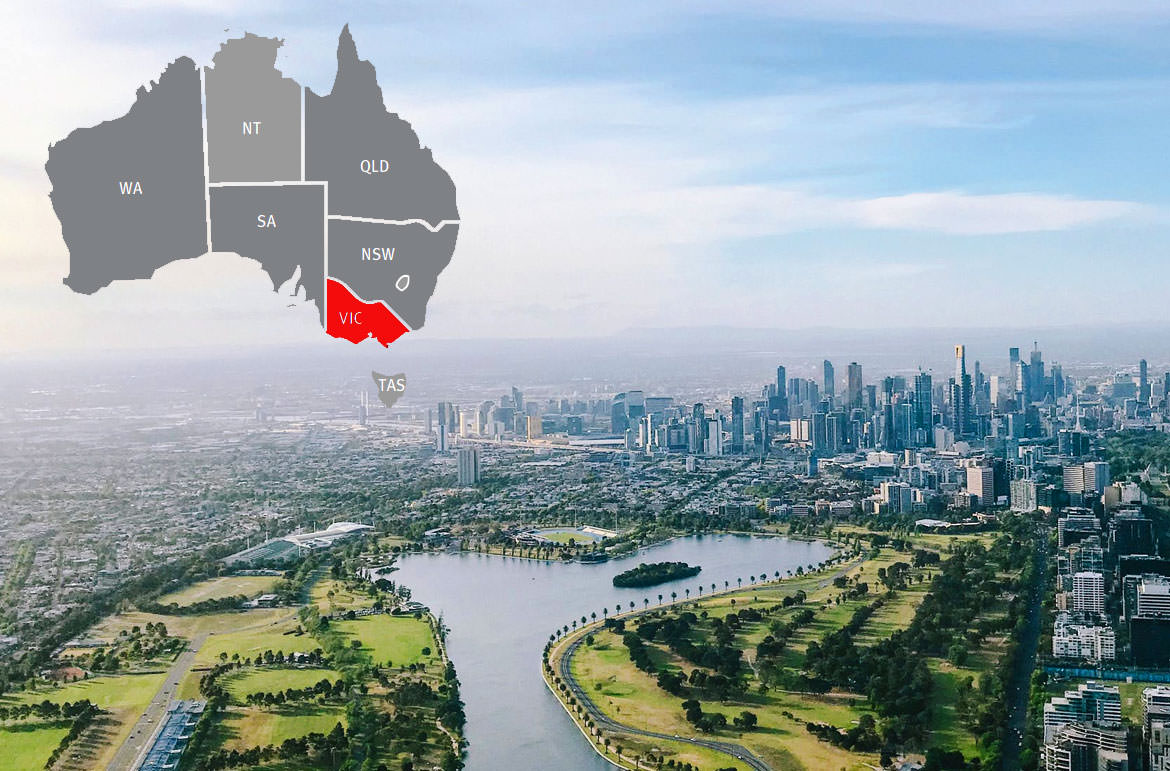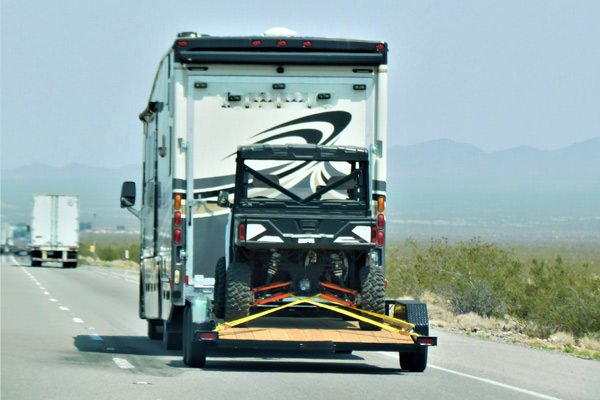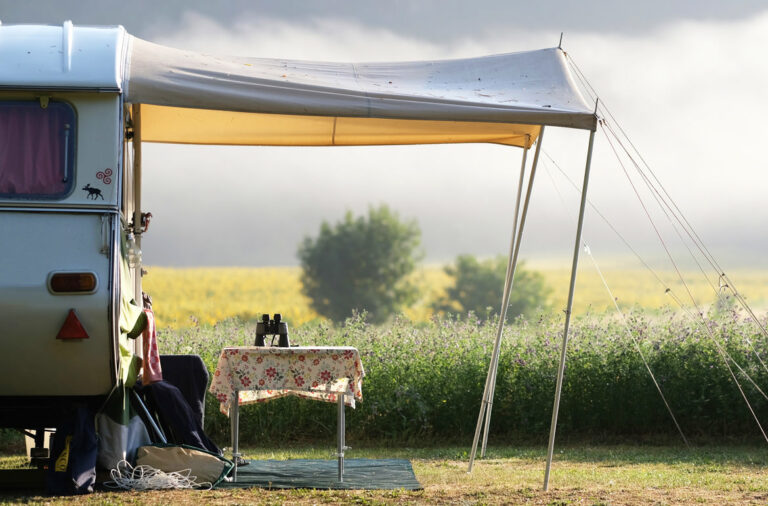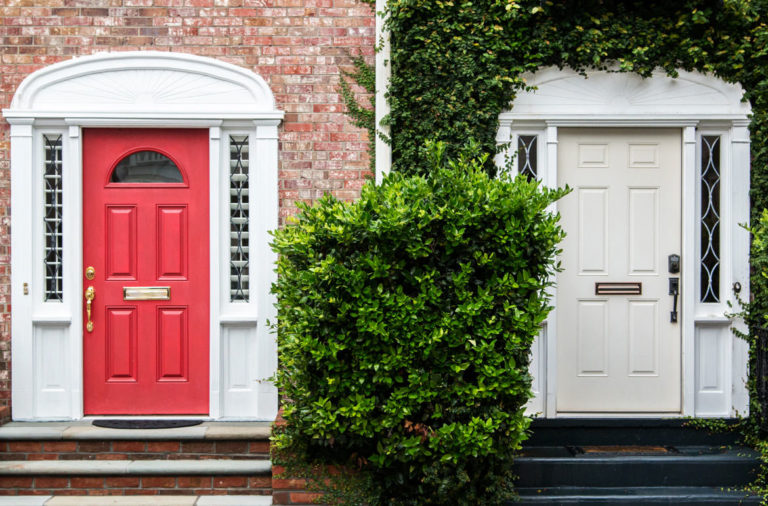
Victoria has always had some of the strictest regulations on granny flats in Australia. But they have come a long way in the last few years, or even just recently, in the last few weeks. It is not impossible to build a granny flat, you just need to know the regulations. A basic rundown of the regulations are that:
You must have a minimum property size of 300sqm. A granny flat may be referred to as either a second dwelling, or a Dependent Person’s Unit (DPU).
A DPU also requires:
- Its own entrance
- To be self-contained.
- To be occupied by a person dependent on the person/s in the main home, such as a parent, grandparent or teenage child, only one of which can live in the unit at any given time.
- Either to be a movable building, or to be easily removable – whichever you Council insists upon. This is so the granny flat can be removed as soon as the dependent stops living there.
DON'T PAY A FORTUNE FOR YOUR GRANNY FLAT. Find out how to deal with council and build a granny flat for the lowest cost possible. Learn More.
A “second dwelling”, on the other hand, requires it to be:
- In the correct “zone”.
- The only second dwelling on your property – no other DPU or dwelling allowed.
- Built in conjunction with the main dwelling – on property that is part of the same title.
- Not be greater than 5m in height or have a floor area that exceeds 60sqm.
So there is a difference between what is classified as a “second dwelling”, and what is a “DPU”, which I will go over today. I will also cover how you can build these on your Victorian property.

Going over these rules now will save you a headache later on
I will discuss the costs of building a granny flat, and what you can have in your dependent persons unit, before it is looked at like unit that is “too” self-contained, taking it into the “second dwelling” category. I will cover transportable building regulations including your “granny flat” options. I will provide you with a list of recommended granny flat builders in and around Melbourne. I will discuss what Councils’ can do if you are seen to be using your DPU as a private rental, and lastly, what benefits are gained from a resale of a DPU.
Firstly, I will discuss recent changes the Victorian government has made to the regulations for a “second dwelling”, that makes it a lot easier for you to begin building.
Update December 2023
We have excellent news for Victoria. On 1 December 2023, the Victorian government has introduced changes to the planning requirements for granny flats, that has removed a lot of the restrictions that were previously placed upon you all.
The new rules? These are laid out for you below:
- Granny flats that are less than 60 square metres no longer need a planning permit, as long as your property is bigger than 300 square metres, and has no environmental overlays or flooding.
- There will be no restrictions on how that small home can be used. You can use them to house family members, provide temporary housing for others, or even rent them out to earn yourself rental income.
Yes, really. All of this has been implemented by the Allan Labor Government, who want to make it easier for you to build that second home you wish to have on your property.
You can see quotes straight from the mouths of premiers and ministers across the state confirming the above here.
They are doing this as they hope it will help families live together and grow old together, not be priced out of the market, and also boost the supply of houses across the state at the same time.
So, you will no longer have to worry about getting planning approval, and can rent it out to whomever you like. What will your obligations be then?
These small second houses will still require the below:
- A building permit, meaning that whilst you may not need permission to use your own land (that is, the planning permit), you must still obey regulations for construction and design.
- To meet the ResCode (residential design code) setback and siting regulations.
You can also not subdivide the land or sell the granny flat separately from your main home.
I do also suggest that you check with your local Council as to their exact regulations on granny flats – these may include size, conditions for privacy, and other guidelines, as all Councils do have different rules.
What Is a Dependent Persons Unit?
A Dependent Person’s Unit is defined as being a removable or moveable building that is on the same lot as an existing dwelling and is used to provide accommodation for a person dependent on a resident of the existing (main) dwelling.
Can You Build a Granny Flat (Dependent Persons Unit) on Your VIC Property?
Potentially yes, potentially no, I’ll cover this in depth below.
Firstly, you must check what your minimum block size requirements are, as these are not specified.
You will need to find out whether your building project needs a planning permit, a building permit, or both.
Permits follow the guidelines in both the Building Act 1993 (the Act) and the Building Regulations 2018 (the Regulations).
These permits are necessary by law, as they are designed to protect you, so you will probably need a building permit.
But generally speaking, your local Council may let you get away without having a planning permit for your DPU. Due to the Building Regulations 2018, you may not need a planning permit if your granny flat meets certain criteria;
- Your granny flat must be a Dependant Person’s Unit (DPU)
A DPU is a second dwelling on your land for a person dependent on the person/s in the main home:
- Such as a parent, grandparent, or teenage child
- There must be only one person allowed to reside in the unit at any one time.
- A DPU must be self-contained, meaning it must have:
- A kitchen, living area, bath or shower, and toilet.
AND
- They usually share their sewerage and water services with the primary dwelling.
Further regulations of a DPU are that:
- There must be only one dependable person allowed to reside in the unit at any given time.
- It must have a separate entrance.
- The DPU must be self-contained, to the extent that is considered necessary depending on what the dependent can utilise in the main home (see the sub-heading below for further clarification).
- Some Councils require the DPU to be easily removable. Other Councils require it to be a building that is movable, which is classified as being constructed from non-permanent materials, such as, no masonry. This is a dwelling that is built/manufactured with intent to be easily and readily moved from site to site. Either way, this is so that it can be easily removed from site immediately after the dependent person ceases to live there.
Your DPU may still have to satisfy a number of ‘site area’ matters such as ‘minimum garden area’ (Principal Private Open Space) rules. These provisions can be seen in the relevant Planning Scheme &/or Building Regulations 2018.
Now, all of the regulations of your local Council must also be followed. Usually this means that the person occupying the DPU has to be named before you begin building.
But regulations do vary between Councils. So, I suggest that you check with your local Council about:
- Their building codes.
- Their regulations.
- The setbacks required.
This information is usually available on your local Council’s website. Or, you can:
- Visit their office.
- Make a call, and ask to speak to both the planning and building departments.
Each department will give you the exact regulations that are specific to your Council. It’s best to obtain something in writing from them before planning your DPU.
You will also need to check your certificate of title, ensuring there are no restrictions or provisions on your property.
Getting advice is free.
Handy sites you can visit for more information are:
- The Consumer Affairs Victoria website can help you plan and manage your DPU project.
- You can find your local Council by map or looking at the list of Councils’ on the Victorian Department of Transport, Planning and Local Infrastructure
- The Victorian Building Authority website can help you understand the building process and permits.
- This website shows you how to calculate the requirements of the clause for each setback.
When Does a Dependable Persons Unit Change to Being a Second Dwelling?
With this, the clue is in the name itself. A “Second Dwelling” is just that – a separate dwelling.
So, if the building was not removable/moveable and/or not being used to provide accommodation for a person/s dependent on a resident of the main dwelling, then it would be classed as a second dwelling
This definition is not clear-cut. Basically, you would consider a self-contained unit to have everything you need, such as its own kitchen, its own shower, and its own toilet. However, with a DPU you can still potentially have these – this would be dependent on what is in the main dwelling itself, and whether it is considered necessary.
But essentially, working on the basis that if any of the facilities that are required in the DPU (kitchen, living area, bath or shower, and toilet) are detached from the main dwelling, setting these aside for the exclusive use of the occupants of the second dwelling is a good idea – actually, considered necessary for what is classified as a “second dwelling”. Tricky, I know. I will go over this under the next sub-heading.
Where once both a building permit and a planning permit would also be required for this, as we stated above, only just recently, if you meet the requirements for land size and granny flat size, now only a building permit may be required.
Can You Build a Second Dwelling on Your VIC Property?
If unsure about this, I suggest that you talk to your local Council.
What I have uncovered is that most will let you, if you:
- Are in an area that is zoned General Residential Zone, Township Zone, Mixed Use Zone, Residential Growth Zone, or Neighbourhood Residential Zone.
- Have no overlays applying to your property (your application may still be considered though, so check with your local Council about this).
- Have a property that is 300sqm or more.
- Do not have another DPU or second dwelling already on your property.
- Build the second dwelling in conjunction with the main dwelling, as part of the same title (that is, not on sub-divided land, so that the sub-divided property contains only the second dwelling).
You will also have a number of design requirements to meet, including that you:
- Meet their number of ‘site area’ regulations, such as ‘minimum garden area’ (Principal Private Open Space).
- Do not exceed a floor area greater than 60sqm.
- Do not have the building exceed 5m in height.
- Meet all overlooking, rear, and side setback regulations.
- Allow for solar access to open space.
- Include a kitchen sink, an area where food can be prepared, a bath or shower, and toilet or washbasin, so it can be classified as self-contained.
I do again strongly suggest that you check with your local Council about their exact design requirements, as these will vary from Council to Council. One you may get away with, though, is you may not need provide a car park for the occupant.
Costs to Build a Granny Flat in Victoria
DPU’s differ from standard granny flats in various, money-saving ways:
- They generally source their utilities from the main house, not a separate supply point.
- They can’t be built with permanent materials (i.e. masonry).
- There is no need to provide separate driveway access, car parking or landscaping.
As a result, they can end up costing less than granny flats in other states.
The average price for a DPU ranges from $140,000 – $190,000, depending on the size and style/structure you choose.
This price also typically includes what your standard granny flat doesn’t:
- An intercom or communication system so the dependent can stay in touch.
The catch is that the DPU is meant to be removed when the dependent no longer lives there. However, many Councils confess that they do be impose or monitor removal, so they are almost never removed.
A written contract is vital in Victoria when building a DPU. So first, your builder should perform a soil report.
They will need to gather foundation data from the soil report to give you the most accurate quote.
This information is used to work out the:
- Depth of stumps, type of slab or strip footing necessary.
Next, to ensure you keep your costs within your budget, check whether these costs are in your contracted price:
- Your chosen fitting and fixtures.
(*Note – These prices might be an estimate, the exact make/model/quantity may be unknown)
- The building fee (this may/may not include the costs of obligatory inspections by a building surveyor).
The costs below may not be in your contract price, and so you may have to add them to your budget:
- Mandatory inspections by a building surveyor (if not already included) Up to $2100.
- Planning permit fees (if required by your local Council) These are variable, as they depend on your local Council.
- Lodgement fee paid to your local Council – Costs vary according to your local Council.
- Inspection fee (a fee paid to a private certifier or Council certifier to ‘sign-off’ on your property) Roughly $700 – $2100.
- Government levy charges, when the cost of work is more than $10 000 – Your building surveyor can advise you of this.
Ensure any alterations to the contract are agreed in writing with your builder, such as:
- Prime cost items (fixtures and fittings that are in the contract, but you only have an estimate on price).
The only time this is not required by law is if the builder has reason to believe the changes will not:
- Cause delay to the building process.
- Require a new permit.
- Add over 2% to the original contract price.
If unsure before agreeing to your builder making other changes to the price, you can:
- Call the Building Information Line on 1300 55 75 59 between 9am – 5pm, Monday to Friday (except public holidays).
Changes to building work can mean the final price has increased from the initial agreed cost.
For any building permit that was issued from July 2019 onwards, you have a duty to;
- Notify the Victorian Building Authority (VBA) if the altered final cost is $15,625 or more, within 28 days.
You may have to pay a fine if you:
- Do not notify the VBA of alterations to building works.
- Give false information regarding the end price.
For more details, view Consumer Affairs Victoria’s website.
If you find the prices of building a DPU in Victoria too high, there are ways of lowering these costs. These include:
- Not including unspecified fixtures and fittings (i.e. prime cost items that are an estimated price), as these can significantly blow your budget.
- Build a basic design – i.e. do not include a kitchen in the initial design, then modify it afterwards to make the unit self-contained.
- Do the manual labour work yourself – see my post about “How much does it cost” for advice.
For more information on building contracts, visit Consumer Affairs Victoria’s website.
How Long Does the Council Permit Take if I Do Need to Lodge One?
As we have discussed, you may need to lodge a planning permit with your Council, depending on what exactly it is that you are building.
So yes, the approval processes vary somewhat, but, in general, you will have to go through one or both of the two approval processes:
- You may need to lodge to get a planning permit (what we often call a Development Application) first.
- You will need to get a building permit.
Getting a planning permit can take longer than getting a building permit, as each application for this permission must be examined thoroughly by your local Council. To be submitted with this, Council will require detailed plans and specifications, such as:
- A current copy of your title (one that is within three months of age).
- Complete copies of any agreements entered into, or Section 173 Agreements that are registered on the title.
- Details of what you propose, including the description of what you are submitting and any other applicable information, for example, the reasons for the setbacks, size, removal of vegetation, and if warranted, any excavation or fill.
- Site plans, floor plans, and elevation plans drawn to a befitting scale that is dimensioned in full.
It is important to note here that all Councils have different needs, and so again we do suggest checking with yours’ first as to their exact requirements. This information can normally be found on their website, or by calling or visiting them in person.
The time it takes for approval will depend on your location. But on average it takes roughly 45 calendar days to process an application if all required information is provided. To help with the speedy processing, ensure all necessary documentation is provided upon submission of your application.
Transportable Building Regulations in Victoria
Transportables are a movable building. Therefore, they classify as a DPU that can be built on the same lot as your primary dwelling.
My article on transporting a granny flat covers everything you need to know about these, including where they are available for purchase in Victoria.
Movable Granny Flat Options for Victoria
Movable units are self-contained, movable buildings that can be set up as a DPU.
They are mainly for the elderly, or people with a disability or support needs, so they can live independently.
The same rules that apply to a DPU apply to a movable unit. You may consider a prefabricated granny flat – one that is built off-site. Learn more about these in this post of mine.
List of Granny Flat (DPU) Building and Design Requirements
If your intention is to build a DPU, there are a list of specific requirements you many need to submit for a planning permit. These requirements show that the DPU can be removed when it is no longer required on-site.
These design specifics may be:
- Ensuring certain parts of the frame are screwed together, not all nailed together as a permanent structure
- The granny flat is built upon stumps or piers, not on a fixed concrete slab
- The wiring and plumbing can easily be dismantled and put back together elsewhere.
There are other specifics, however the above highlights the things that Councils need to see.
What Can the Council Do If You Are Seen to Be Using the DPU As a Private Rental or AirBnB Guest House?
The laws in Victoria do not allow renting a DPU to gain additional income.
Just recently, there have been 6 cases where the Victorian Civil and Administrative Tribunal (VCAT, or the Tribunal) have considered whether dwellings were constructed under the provision of being a DPU and movable building.
Councils’ belief was that these dwellings did not meet the definition of a “dependent persons’ unit” and “movable building”. It was actually their belief that over time, these dwellings were being built under the guise of being a DPU, but were getting larger, and had intentions of becoming secondary dwellings.

Moving a structure larger than a full sized RV, could mean some complications
The exact definition of a DPU is that it is a “moveable building on the same lot as an existing Dwelling and used to provide accommodation for a person dependent on a resident of the existing Dwelling”.
A movable building is classified as “a structure, other than a tent, caravan, or vehicle, which is designed to be moved from place to place on more than one occasion”.
So, what happened in these cases? Well, Council sought declarations from the Tribunal that these buildings did not meet the guidelines of being movable, or a DPU. These cases went to Court, over the uncertainty of whether they were “designed to be moved”.
After many arguments, the cases were dismissed and an order sent to the Minister for Planning, to consider if any clarification was warranted.
However, the Victorian laws are not so lenient when it comes to renting outside of the family, to a non-dependent. If you are seen to be gaining income from a DPU, such as by using it as a private rental or an AirBnB, the Council have every right to take you to the Tribunal. In many cases, there have been DPU’s that have been ordered to be removed immediately, and this often comes with excessive fines.
What Are the Benefits for the Resale of a DPU?
This is a tricky question to answer. We have clearly discussed some Councils insist on a DPU being a movable or easily removable building, so that the DPU can be removed once the person that it was built for stops living there. However, most Councils have no record of where the DPU’s have been built, or system that follows up what happens once the dependent has ceased living there.
Meaning, many Councils admit that they do not enforce or monitor the removal of the DPU, so you can check with your local Council first.
Victorian laws do not permit rental outside family for a DPU, so investing in a DPU does not allow for an extra source of income. But if looking at selling your property in the not-too-distant future, the value of your property could very well be significantly increased by the DPU. There’s also the chance that your property might remain on the market longer, to find the right investor.
Other benefits of a DPU are that many can be relocated easily, which makes them ideal for those who want a relocatable home.
Conclusion
When building a granny flat, there are two main factors that will decide whether you have a successful application. Your land size must be a minimum of 300sqm for a second dwelling, but check with your local Council about your minimum land size requirements for a DPU.
The other is the purpose of occupancy, as Victoria has had some of the most severe granny flat rules in our country.
But just as recently as December 2023, we are as pleased as you that these are becoming in line with other states of Australia, so becoming less restrictive. It is becoming easier for you to get approval for a granny flat that you intend on renting out.
It is no longer just easier to be approved to house a dependent family member in a granny flat. Whereas before, if you called it a “dependent person’s unit” (a DPU), approval was more likely. A DPU is, for example, for a family member to occupy due to health or economic reasons.
Some Councils will insist on a DPU;
- Being a ‘movable building’, or one that is easily removed.
Council regulations say the DPU must be removed once the person it was built for ceases to live there. However, the best piece of advice that we have been given is that you just must convince and satisfy your Council that your DPU is designed to meet their regulations – whether that is that it is removable, or moveable.
A second dwelling, on the other hand, is a permanent dwelling. And these rules have changed just recently – so if you are one of the lucky ones who do not need to get a planning permit for this type of granny flat, it does not have to be removable, and you are finally allowed to use it to accommodate whoever you like and gather rent from it as well.













